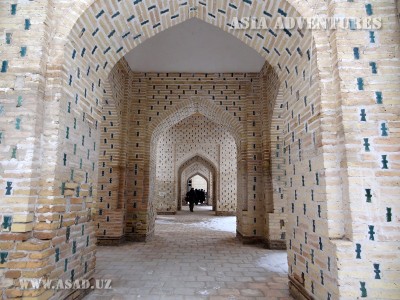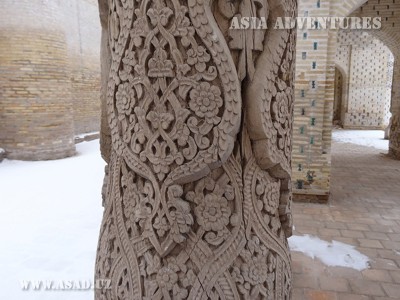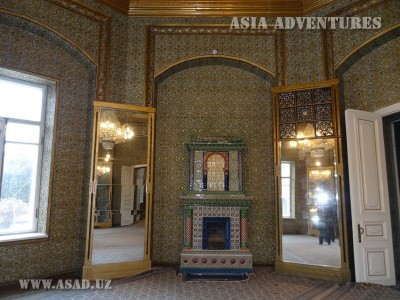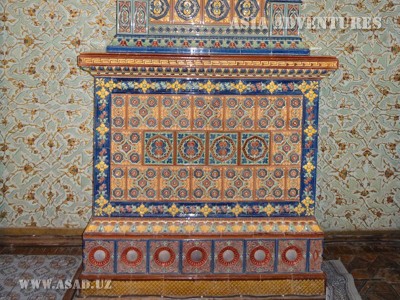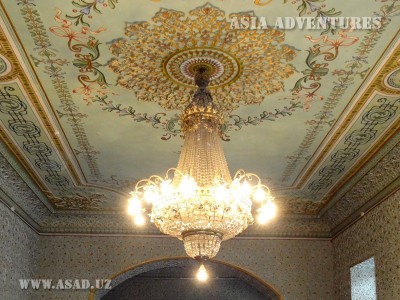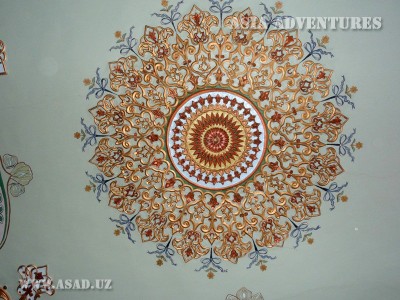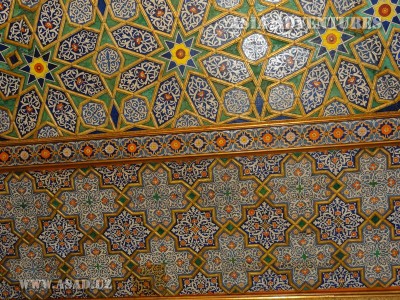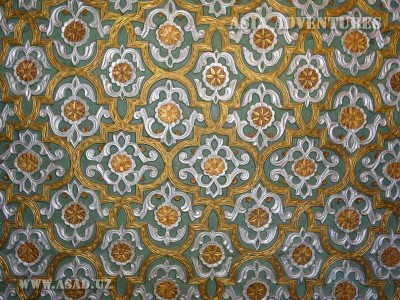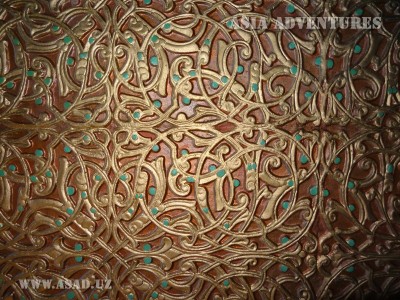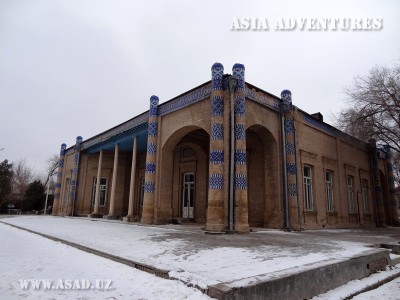
Dishan-Kala “Outside” fortress of Khiva. In the middle of XIX century the city was surrounded by almost six kilometers fortified wall made from mudbricks. A height of walls was about eight meters and thickness in the bottom was about six meters. Ten gates led to the city. Unfortunately, only three gates Kosh-darvaza and Khazarasp-darvaza and fragments of fortified wall are remained to the present day. Few landmarks: Nurulla-Bay’s palace (1912), are remained here. The palace was built by Mukhammad-Rakhim-khan II for his son – future khan Asfendiyar. Except local people, Russian and German masters were called for building the palace, that is why, wonderful interiors include the elements of European style (wallpapers on the walls, fireplaces, adorned with tile blocks, a parquet) and traditional eastern woodcarving and anaglyptics, an ornamental painting. There are more 100 rooms in the palace, joined by galleries, a court-house, khan’s apartments, a small mosque, rooms for guard, stables, rooms for servants and a harem. The whole complex is fenced-in by a high wall, with a length more 650 meters with traditional Khiva towers.
The most interesting is the decoration of khan’s reception room, which consists of seven rooms: a waiting room, a reception room, a throne room, a banquet room, and three living rooms. Walls and ceilings are covered by fillet with gilding and colored paintings. It is a free-standing building for the reception of foreign ambassadors, outside the palace. A throne hall is the most beautiful, faced in Russian art nouveau with a chic trimming, furniture, Venetian mirrors, bronze gilded electric chandeliers with cut-glass pendants. Chandeliers, and a small power plant were presented by Russian king Nikolay II.
Now there is a restoration work in the complex and soon the palace will shine with its splendor as hundred years ago.

 Centralasia Adventures
+998712544100
Centralasia Adventures
+998712544100





